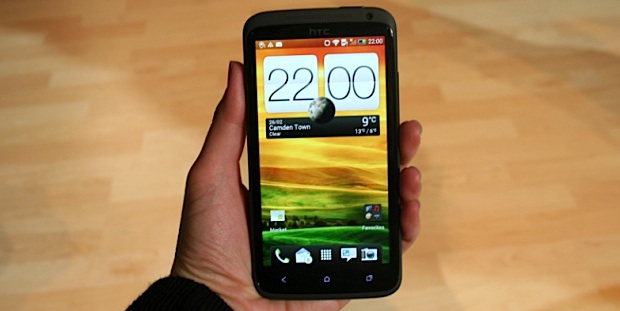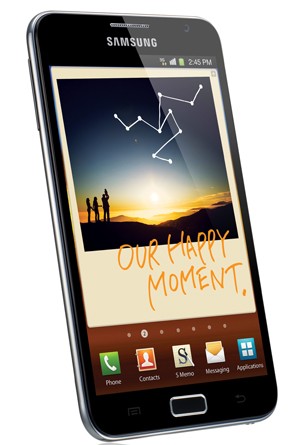

"Come together" is not just a lyric from a Beatles' song. You are seeing that phrase being 'lived-out' in hardware, and even in software applications. The popular buzz-term we have come to know so well is "convergence". Tablets are being offered in 7-inch form-factors, and smartphones are moving up toward mini-tablet size, into what previously has been a bit of a gray zone. In a previous article we mentioned that devices with screens of 5 to 7-inches defined that gray zone, and said we expected additional contenders in that size range, in spite of the fact that the pioneering Dell Streak 7 tablet died an early death there. That sometimes happens to leaders and pioneers. Their demise may be followed by a lasting trend, and the Streak 7 may have been prescient and a bit ahead of its time.
Other recent examples of convergence include the Asus PadFone, the Fujitsu Lifebook 2013 Concept Notebook, and the fun and useful 1TB Swiss Army SSD, USB, eSATA II, Flash-drive Knife. There is so much coming-together-convergence with that last one that it almost hurts to pronounce it.
True to its name, and born of the marriage of smartphone and tablet, the phablet is larger than the typical smartphone and too small to be considered an actual tablet. Many in the industry hate the term "phablet", but have yet to conjure up a better one. Significant numbers of phablets are being developed, and several were recently unveiled at Mobile World Congress (MWC).


Stunning higher resolution screens will facilitate amazing new functionality and designs, and will be coupled with practically non-existent bezels, to minimize total device size, while maximizing display real-estate. Forgive the pun, but the most notable current entry into the phablet genre is the Samsung Galaxy Note, with a 5.3-inch screen. LG is expected to follow-up with the Optimus Vu with a 5.5-inch display. The 4:3 aspect-ratio of the Vu is not likely to be well received, because it gives the device awkward dimensions and makes it difficult to use as a phone.
Just as displays are gaining in pixels, so also are the cameras. Nokia, as an example, has introduced its 808 PureView with a 41-megapixel camera. That phone with a 4-inch screen, is not a phablet, but you will see phablets with similar camera capabilities, thereby taking advantage of the larger displays.
Some of those phablets just seem to be crying out for thin, slide-out, physical keyboards. The Motorola Droid3 comes to mind, regarding the keyboard design, even though it is not a phablet. A Motorola phablet with a physical keyboard and higher resolution large display, could have all the earmarks of a winner.
Pushing the phablet smartphone trend up another notch is the HTC One X, with a 4.7-inch, 720p HD display, a quad-core 1.5GHz chip-set, 32 GB of storage, and 1GB of RAM. The One X is basically a hand-held PC, with specifications to prove it.
Peer-to peer near-field communication (NFC) is a definite trend for sharing data, contacts, and web-pages between phones. Face recognition is another trend, allowing phones to be unlocked without a password or touch-based gesture. Speech transcription typing will accompany the Android 4 - Ice Cream Sandwich (ICS) operating system, as will data-use monitoring to control user costs. Over the next few years expect to see true 4G LTE high-speed service.
Making things "come together" even more, at least one phone includes a pico-projector; the Samsung Galaxy Beam Projector Phone. Stylus pens are a part of the phablet trend, and phablets are continuing to gain capabilities previously relegated only to tablets, and as such, they continue the trend of convergence. Even operating systems seem to be experiencing a form of convergence as Android, iOS, and TouchWiz seem to copy each other's features.
Even smartphones of the smaller variety are a veritable symphonic maturation of technology convergence: multi-media player, GPS, camera, web-browsing, mobile-computing, texting, data storage, wireless broadband, voice-control, tethering other devices, touch-based inputs, unified email inbox, on-screen and physical keyboards available; and don't forget, they still function as phones.
List of Upcoming Technology Trends & Developments
- Large high resolution HD displays allowing use of full web-pages, not just the mobile versions
- Quad-core processors
- NFC (peer-to-peer near-field communication)
- Android 4 - Ice cream sandwich (ICS) operating system
- Smaller, almost non-existent bezels to increase usable screen real-estate
- Speech-transcription typing
- 4G LTE high-speed service
- Cameras with high megapixel specifications & loss-less zoom
- Face recognition to unlock phones without password or touch-based gesture
- Data-use monitoring to control costs
- Convergence of features in operating systems (Android, iOS, TouchWiz)
- Stylus pens to become more common
- Slide-out physical keyboards may appear on some phablets
- Pico-projectors (but very few in number)

 Laptop & Tablet Parts
Laptop & Tablet Parts





















One Response to Upcoming Phablet Smartphone Technology Trends & Developments